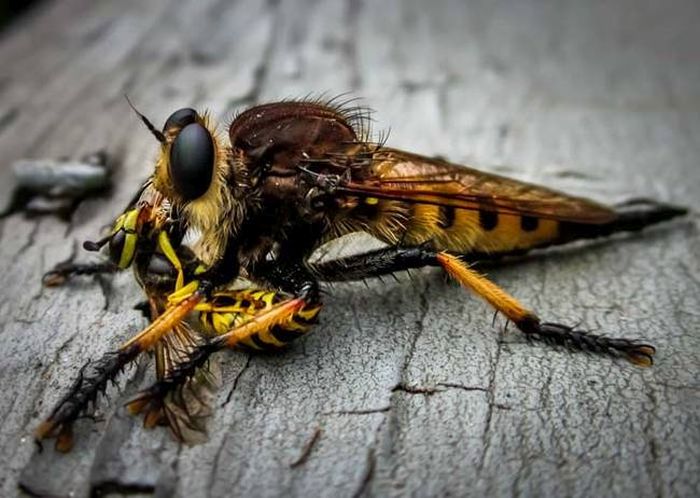|
|
Asilidae, Assassin Robber Fly
|
Biology
The Asilidae are predators, both in the juvenile stage and the adult stage, and feed on small arthropods, mainly insects. Although predatory forms in the adult stage are present in other taxonomic groups of Diptera the Asilidae are the most representative for the number of species and for uniformity of feeding behavior. They are aggressive to the point of earning the common name, in English, of "robber flies". The combination of high biodiversity and high predatory activity leads to this family playing an important role in the ecological stability of entomofauna.
The life cycle takes place in 1–3 years. The postembryonic development consists of four larval stages (instars) and one pupa. The larvae of the first instar differ from other stages in both ethology and trophic regime. The larvae of most known asilids live in the soil or in the case of some taxonomic groups, in rotting organic material, usually wood and the bark of dead trees. With regard to feeding behavior, most of the literature gives the larvae of the Asilidae as entomophagous, but there are also doubts about the real nature of the trophic regime and its mechanisms. The entomophagy of some species had indeed been already hypothesized by some authors of the ' nineteenth century, based on the findings of larvae of asilids associated with larvae of other insects, but Melin (1923) asserted that in reality predation was occasional and secondary to the plant-based diet. More recent studies have confirmed the entomophagy of some asilids without extending this species feeding behavior for the whole family. Less certain, however, is the mechanism of implementing entomophagy: in general, the behavior is cited as predation, but for some species may be ectoparasitoids . Musso (1983) described the feeding behavior of the larvae of Machimus rusticus and its evolution during postembryonic development : in particular, the larvae of the first instar does not feed on insects, those of the second instar feed on secretions by larvae of beetles (and may cause death), while the larvae of the third and fourth instars actually behave like predators. In short, the feeding behavior of larval asilids can configure as intermediate between predation and ectoparasitism.
|
|









